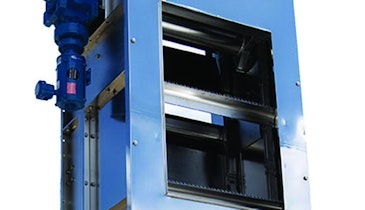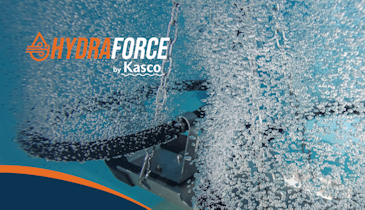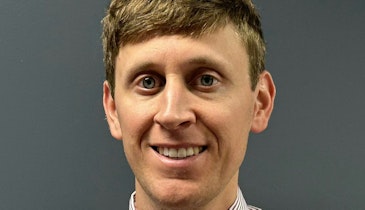Interested in Headworks?
Get Headworks articles, news and videos right in your inbox! Sign up now.
Headworks + Get AlertsHeraclitus of Ephesus probably said it best: “The only thing constant is change.” When you consider the collection and treatment of wastewater, Heraclitus’s thoughts are quite apropos.
One can be relatively certain that he did not have wastewater in mind. It was thought that Heraclitus’ writings seem purposefully written to force a reader toward independent thought and realization. As discussed in “Our Curious Relationship With Sludge,” the purpose and mission of the wastewater treatment plant is in a constant state of change. It’s not boring being a water professional these days.
The time period when a treatment plant was constructed has significant effect on what can be done to meet new and emerging challenges. What once was state of the art at the time the plant was built can often fall short of the new treatment objectives. With changes in regulations aimed at tighter forms of pollution control, plants would adapt from basic primary treatment to secondary treatment techniques. These were relatively straightforward modifications. With the introduction of more sophisticated processes such as tertiary treatment and beyond, operations became increasingly more complex. More consideration needed to be given to protect equipment with delicate features or a high replacement value. Unwanted constituents in the wastewater that had previously passed through the facility increasingly had to be captured and removed.
One thing leads to another
New challenges emerged in areas of practical implementation. For instance, modifications in the headworks that required going to a finer level of screening presented challenges on a number of fronts. With finer openings and new media on the screen itself (such as perforated plate) being considered for modification, greater hydraulic head-losses were imposed on the design. Actual influent throughput capacities are possibly reduced when retrofitting existing structures. This situation would require the addition of more channels to accommodate similar or greater influent flows.
Similar challenges arose for the capture of sand and grit. Grit was nothing new regarding issues of the material settling in basins and causing operation and maintenance issues. However, with the new processes being brought online, the more sensitive technologies employed were affected by abrasive wear and the need to extract a finer grit particle increased.
With the implementation of these improved techniques for headworks screening and grit capture, volume-related issues arose. The significant increase in volume of the material collected needed to be handled and processed properly. Cost for material handling became a much bigger consideration. In addition, many of the processes downstream being protected by these improved headworks and grit systems were inadvertently affected by the removal of the organics out of the flow stream. This created a need to separate out the organics from the inorganic and return the nutrient back to process.
The shift beyond pollution control to resource recovery
Priorities and focus have shifted. While pollution control continued to be a mandate, new priorities emerged to include higher energy efficiencies and developing techniques for resource capture (such as reuse water, biosolids and thermal energy) from the surrounding operations and the waste stream. Increased cost of energy associated with operating these new resource recovery facilities gave rise to justifications for cogeneration technologies to create energy. This was accomplished by putting the volatile organic-laden sludge to work through anaerobic digestion. This process produced biogas, providing fuel to drive electrical generation turbines. Electrical generation on site and reclamation of waste heat in the process opened up the possibility to move toward a net-zero energy threshold for the plant. Along with the electrical generation, extracting reuse water and biosolids for agriculture, biofuels, and off-site energy purposes, created new possibilities for revenue streams to offset the added costs of operation. This opened the door for movement towards revenue-positive opportunities.
With these new possibilities also came additional unique practical, political and financial challenges. Putting aside the political and financial challenges, some of the practical changes needed in the existing facility such as improved headworks and grit-capture equipment becomes critical to these new resource recovery techniques. Improved protection from unwanted inorganic debris in the sludge is essential. By removing debris, improved capacity efficiencies are developed in the digestion and cogeneration processes to make the systems function at levels required to maintain positive revenue to achieve success. The drive to optimize and increase energy capacity of the anaerobic digesters opened up the viability of accepting food wastes and waste grease to effectively increase energy production. This in turn opened another point of entry for material to enter the treatment process, which requires considerations for proper screening and classifications of the incoming wastes.
The shortest distance is not always A to B
Most of the treatment plants that undergo these new directions are retrofitted. By the time many of these facilities are ready to go to the next level many changes in process configuration or modification of existing technology have occurred in order to keep pace with new mandates and regulations. A lot of the modifications to protect and condition the flow stream for these advanced forms of treatment could and should happen at the headworks structure itself. This is not always possible. Perhaps the added process only requires a fraction of the flow. It would not be practical to go through a major headworks renovation. Another factor might be site restrictions preventing any further expansion of the headworks facility.
Membrane biological reactors are a good example. Widely employed around the world, the MBR process provides an excellent method to produce reclaimed water. Many versions of this technology are susceptible to fouling and require finer levels of screening than what is typically employed for conventional wastewater treatment processes. In many cases additional ultra-fine screens are added to the design much further into the process flow.
Where do we go from here?
It is quite probable that most folks in the water industry a generation ago did not really fully imagine what would become of our treatment facilities today. Unforeseen issues will arise and our approaches and technologies will adapt. There are certainly some clues on the horizon. Taking a harder look at how we live, consume and dispose of things has recently initiated a whole movement of awareness regarding the use of supposed “disposable” wipes. Another issue on the rise is the use and disposal of plastics. Resiliency of treatment facilities in the face of unusual weather events are also top of mind after our recent hurricane season.
Perhaps old grumpy and obscure Heraclitus of Ephesus was right with his obtuse reasoning challenging us to move toward independent thought and realization. When you stop and think about where we are in this industry and where we are going, it is a task worth doing. These are exciting and challenging times.
Visit the HUBER Technology, Inc. Storefront






